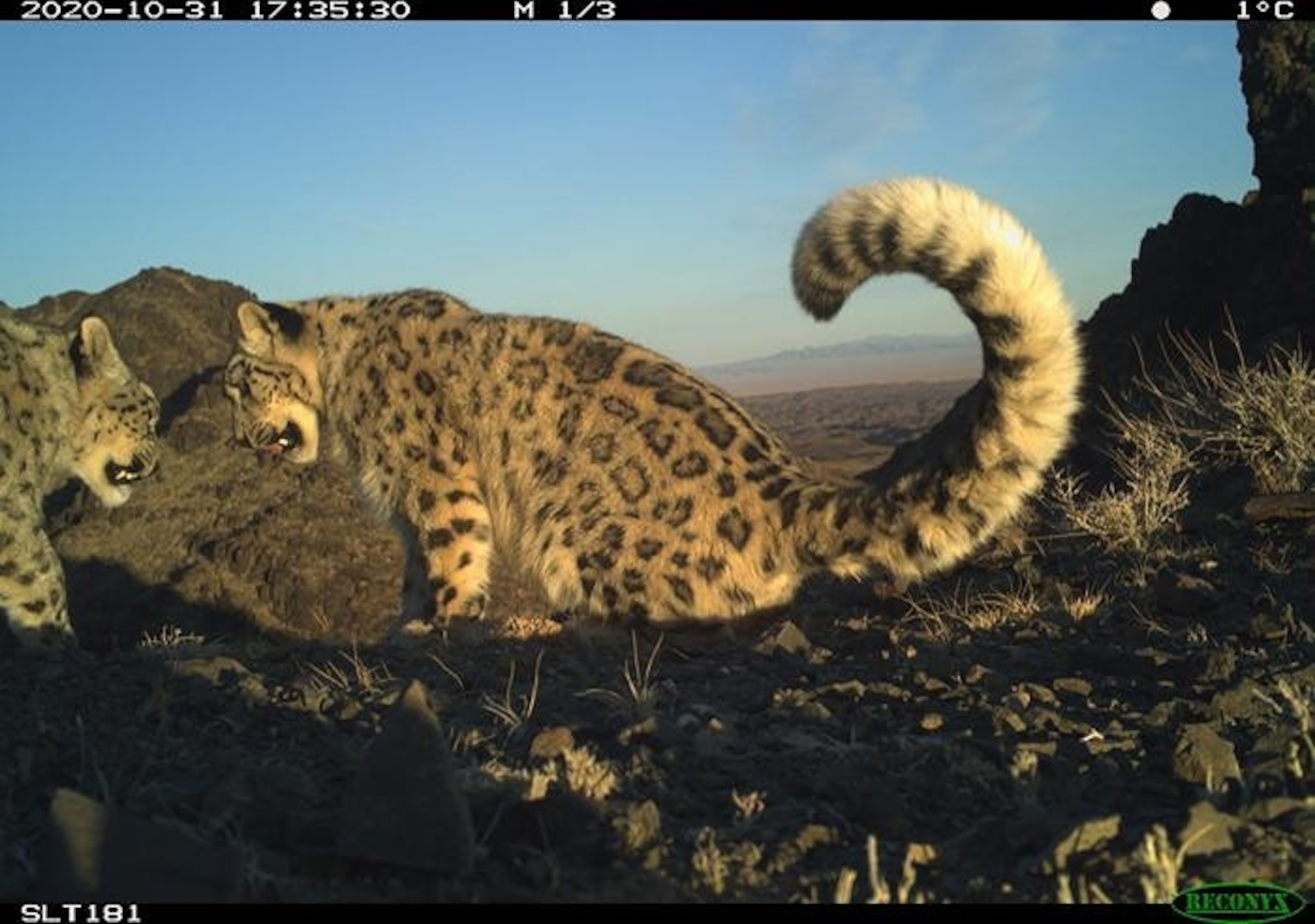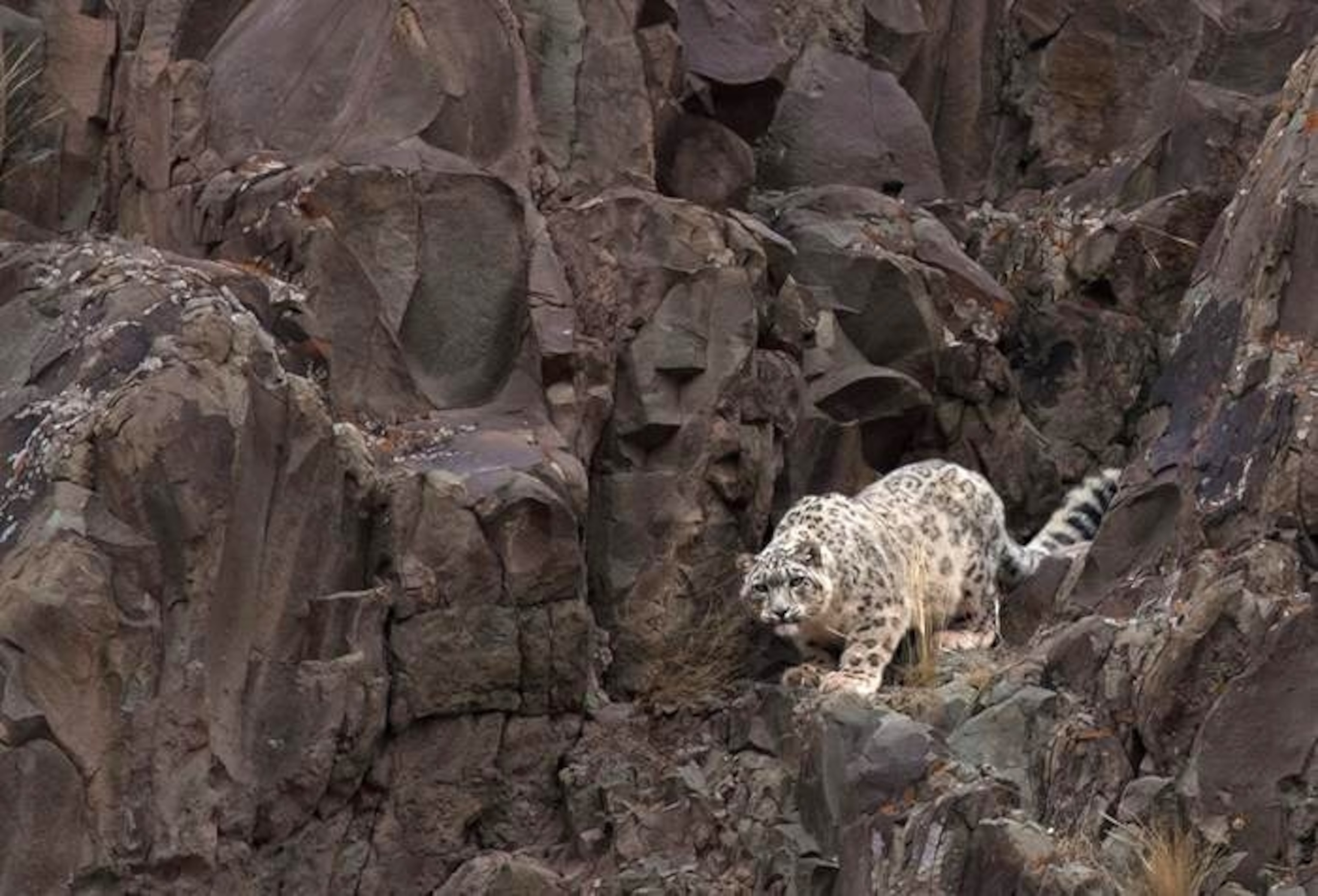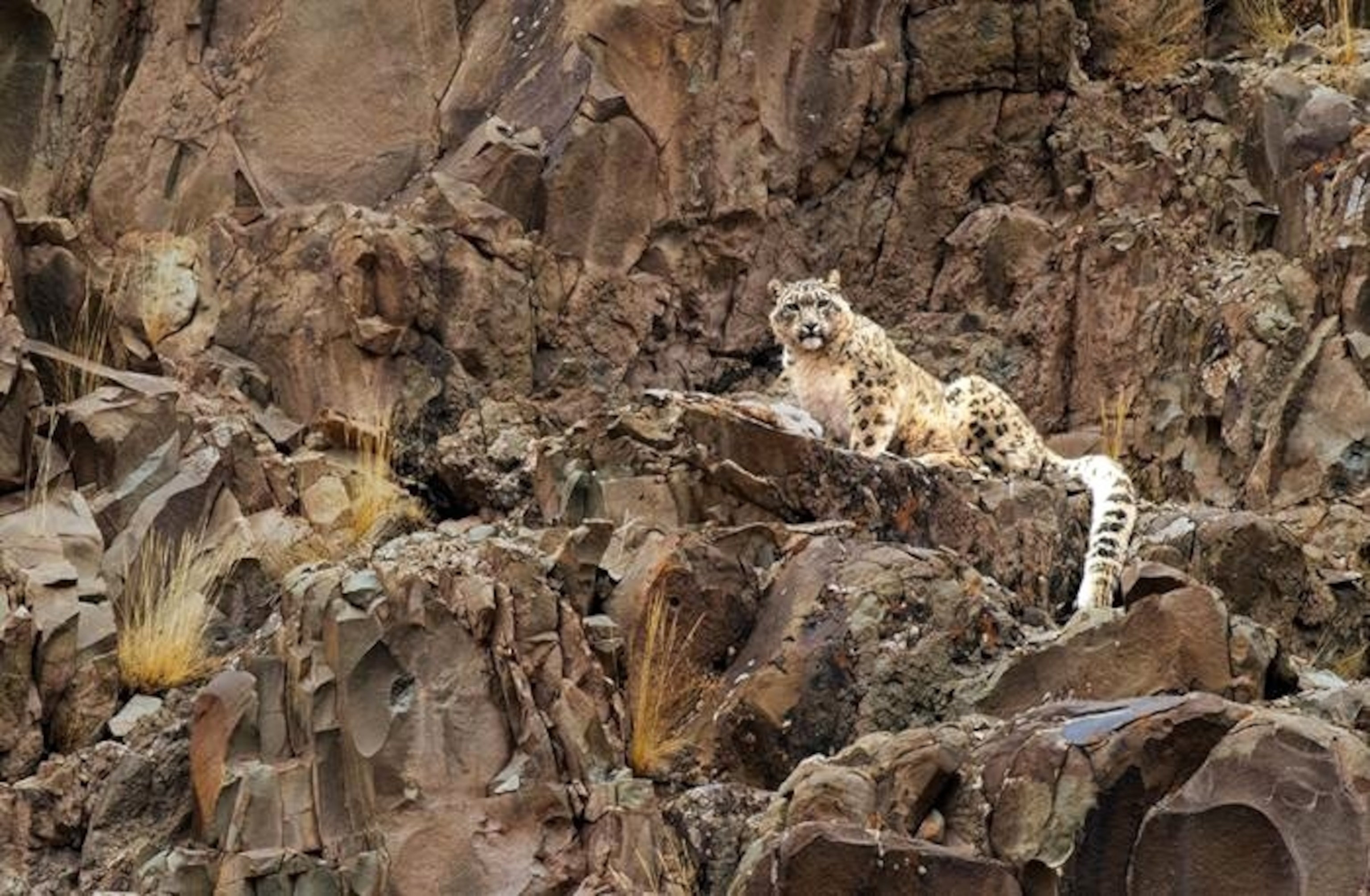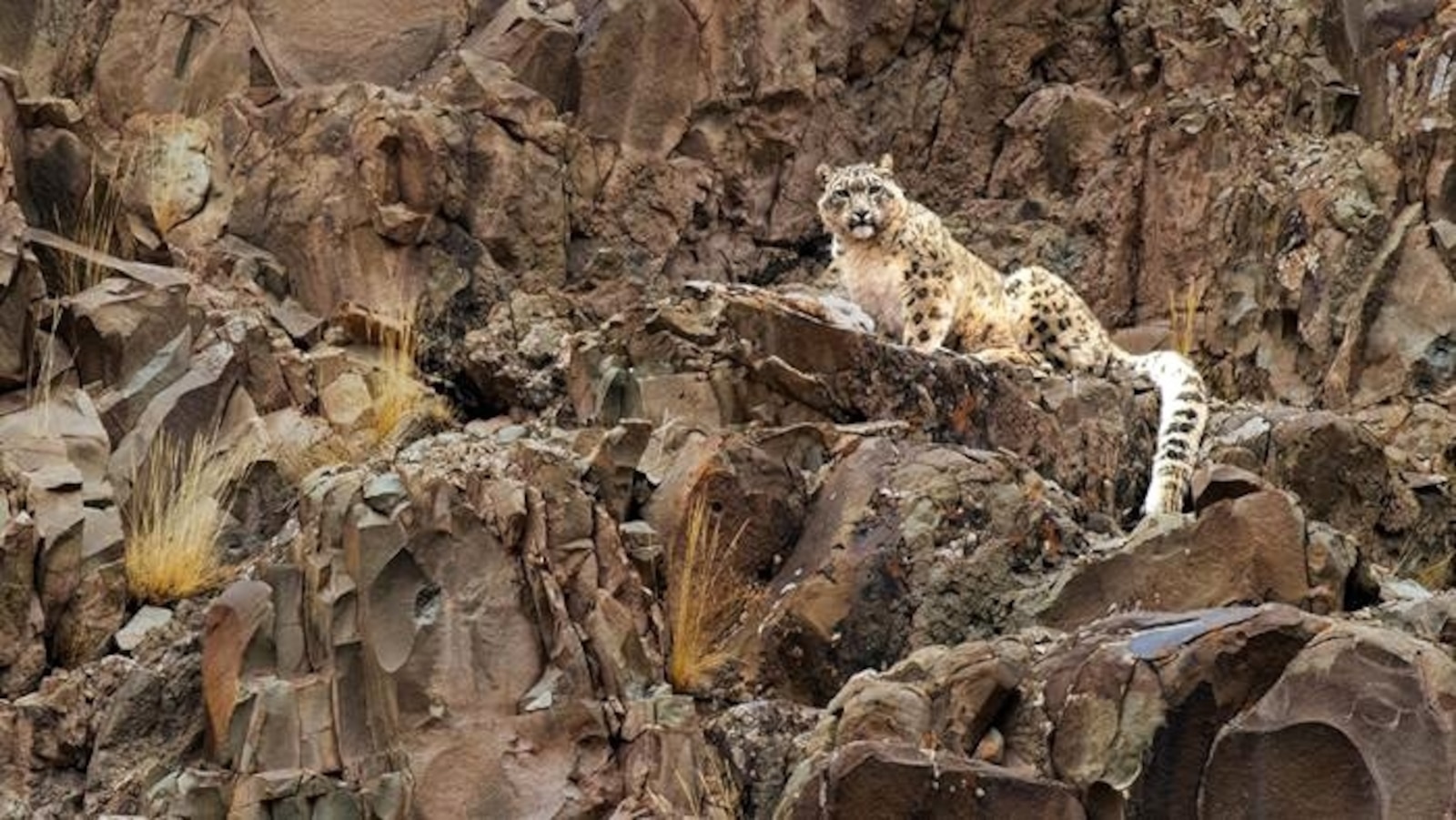Survival of snow leopard populations ‘precarious,’ researchers say. Here’s why
Survival of snow leopard populations could be “precarious” in the future due to the way the elusive mountain cats have evolved, scientists recently discovered.
Snow leopards have low genetic diversity, increasingly their risk of extinction in a changing environment, according to a paper published in the Proceedings of the National Academy of Sciences on Tuesday.
Genetic diversity refers to the variation in genetic makeup among individuals within a population, which can be a factor in a species’ adaptability and survival.
An international network of researchers took blood and tissue samples from more than 40 snow leopards amassed over the last 20 years to study the genome sequencing and establish a baseline understanding of the species, Dmitri Petrov, a biologist at Stanford University’s School of Humanities and Sciences and co-author of the paper, told ABC News.
“The results we got were not the results we expected to get,” Petrov said, describing them as “quite surprising” and “spectacular.”

Snow leopard in the south Gobi, Mongolia.
Snow Leopard Trust and Snow Leopard Conservation Foundation
The species are highly specialized to their habitat in the arid, mountainous regions of countries like Russia, Afghanistan, Nepal, Pakistan and Tibet, according to the paper.
Due to the topography of these regions, the populations are often fragmented and persisted with small, stable populations over long periods of time, the researchers said.
Before the study took place, just four snow leopards had ever been fully genetically sequenced due to the challenges associated with taking samples from a species that is so adept at remaining hidden, according to the researchers. Now, a total of 41 snow leopards have been sequenced.
“The trick with the study was getting enough samples to be able to tell a coherent story,” Petrov said.

A snow leopard from Ladakh, India.
Koustubh Sharma
Their low genetic diversity means that they lack the resiliency needed to survive changes to their environment — especially in the face of global warming, the researchers said.
Even when compared to cheetahs, another big cat with relatively low genetic diversity, snow leopards still have the lowest such diversity of any large feline, Katie Solari, a biologist at Stanford University’s School of Humanities and Sciences and lead author of the paper, told ABC News.
Cheetahs once had large populations but lost numbers and genetic diversity rapidly, which led to lower reproductive success and increased disease susceptibility, the researchers said.
The same fate could be a possibility for snow leopards in the event of any habitat changes — even in the absence of human encroachment due to the remoteness of their range.
“Snow leopards are just not well situated to deal with changes that are likely coming their way,” Solari said.
An estimated 4,000 to 6,500 individual snow leopards are left in the wild — primarily in the rugged mountains of Central and South Asia, according to the World Wildlife Fund. Snow leopards are currently listed as “vulnerable” under the International Union for Conservation of Nature’s Red List of Threatened Species.

A snow leopard from Ladakh, India.
Koustubh Sharma
The researchers also found evidence that snow leopard genes contain a significantly lower “homozygous load,” meaning there are fewer instances of them having duplicate copies of potential harmful mutations when inheriting genes from their parents.
This suggests that snow leopards have purged bad mutations within their population periodically over time, which eliminated potential disadvantageous impacts from historic inbreeding and allowed populations to remain healthy despite small numbers, according to the paper.
“This is not a loss of genetic diversity that happened recently,” Petrov said. “The total number of snow leopards has always been very small, so somehow they’ve been able to stick around for a long time.”
The ability of snow leopards to persist in the future could be threatened if there are any changes to their environment, especially in terms of warmer temperatures in the mountainous regions they live in, the researchers said.
“They do seem to be very precarious. I would have full confidence that they could go on forever,” Solari said. “But if they are disturbed, they don’t have a lot of genetic diversity to help them.”
The team is now working on analyzing samples from more snow leopards to get a better sense of the population across its entire geographic range.
“If their habitat starts degrading, then snow leopards might go extinct fairly easily, simply because there’s just not much ecological space for them and the total population is so small,” Petrov said.


